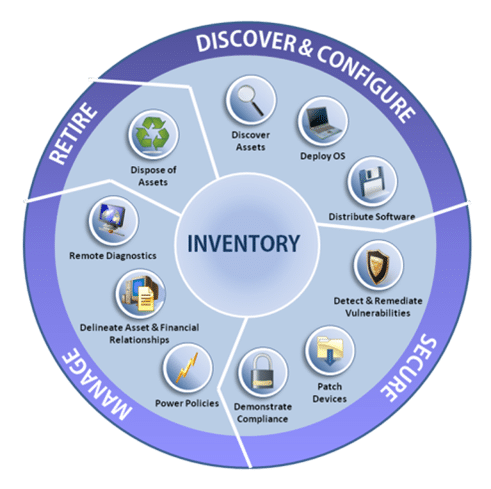7 Tips to Successful IT Asset Management
Government Business Development | Government | Technology | Resources and Insight | 2 Min Read

Technology is always changing, and with each change every successful organization needs to adjust to the upgrades and advancements. The downside of not upgrading can create incorrect data entry, poorly tracked documents, excess time consumption, and an overall increase in costs as a result. The solution to these problems - an Asset Management Solution (AMS).
Organizations that use AMS are successful in several ways. First, AMS assists your organization because it provides an effective authentication method to comply with compliance measures and security policies. Keeping track of assets is very important, and AMS is an excellent tool for this problem. AMS is able to track all licenses owned by your organization in order to prevent any over or under deploying of software. Software is significant for the success of the company and keeping track of it can save your company from failed audits and future expenses on unused software licenses.
AMS implementation is a long term investment, it may seem costly at first, but the benefits from the efficiencies of the program can not only advance the workforce, but save the organization thousands of dollars. Proficient organizations are the most successful ones because they know how to effectively manage their money. Along with that, AMS allows your company to be more effective by upgrading the tools for their employees. Employees with advanced technology can perform at optimal levels and management can note that their performance will always increase. The last key to success in AMS is properly implementing the software.
Here are 7 tips to successful AMS implementation:
- Align the automated asset inventory management solution with your network architecture
- Determine the number of nodes (laptops, workstations, and servers) that the asset management solution needs to manage
- Determine which workstations are static or roaming
- Determine the number of users the asset inventory management solution needs to support
- Complete an upfront analysis of network bandwidth requirements
- Factor in any special head or remote office requirements and connectivity
- Integrate the asset management solution into Microsoft Active Directory for setting up roles and access for asset management staff and end users.
Implementing these steps is the final requirement for successful AMS usage. AMS is an effective resource and a long term investment; spending money on fewer resources will require investments in innovative software that can provide solutions for all realms of an organization.
Read more about AMS, and the advantages of having AMS for your organization in this white paper.
About Kevin Lancaster
Kevin Lancaster leads Winvale’s corporate growth strategies in both the commercial and government markets. He develops and drives solutions to meet Winvale’s business goals while enabling an operating model to help staff identify and respond to emerging trends that affect both Winvale and the clients it serves. He is integrally involved in all aspects of managing the firm’s operations and workforce, leading efforts to improve productivity, profitability, and customer satisfaction.




